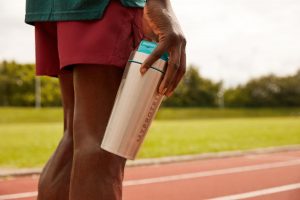We’ve all been there: we do a “real” workout and during the next two days we can barely move without shivering in pain.
Late-onset muscle pain (or DOMS, from Delayed Onset Muscle Soreness ) generally follows an intense training session. Many people believe in the mantra “more suffering, more results”, which, although showing a touch of drama, is not necessarily a bad premise.
Muscle hypertrophy (ie, muscle growth and adaptation) occurs through three primary mechanisms: mechanical load (the amount of weight lifted), metabolic stress (the accumulation of metabolic products as a result of exercise) and muscle damage.
Muscle pain is a symptom of damage done to the muscle, but it may not always be present and is generally a bad indicator of “success”.

The individual dimension
Before we even dive into the physiological aspects, it is important to address the psychological element of DOMS.
We all have different pain sensitivities, and different people will have different experiences with discomfort and pain. 1 While DOMS is certainly a symptom of muscle damage, a more experienced exercise practitioner will have a greater tolerance for pain than someone who is just beginning (although even here there are many exceptions to the rule).
Looking for pain can be dangerous
One of the most pernicious myths among exercise practitioners is that they are not getting the most out of training unless it results in exacerbated levels of pain.
This sets a precedent that can be dangerous and lead to acute exercise overload and even a serious condition known as rhabdomyolysis.
Rhabdomyolysis occurs when muscles continue to decompose or empty after exercise is finished, releasing the contents of cells into the bloodstream. It contains a protein, myoglobin, which can damage the kidneys.
Our advice? Do not evaluate the value of your personal trainer or your training session based on how much pain you have – a smarter workout is usually a much better bet than just a harder workout.
Muscle pain is generally a bad indicator of hypertrophy
DOMS is related to muscle damage caused by exercises that our muscles are not used to and seems to be specifically a product of the inflammation and swelling associated with muscle damage.
Exercise-induced muscle damage and DOMS are clearly linked, but do they actually reflect muscle hypertrophy or are they simply a symptom of small tissue breaks?
On the whole, this second hypothesis seems to reflect reality better than the first.
When looking at the progression of muscle damage induced by exercise and the adaptation of the muscle itself, DOMS has a very vague correlation with the recognized stages of adaptation. 2
Additionally, the proposed causes for DOMS may not even be synchronized. Magnetic resonance analysis showed that swelling and DOMS could occur at two different times, with pain reaching its peak long before any swelling was detectable. 2
We can also have DOMS without any sign of inflammation in the area of the body in question. 2
DOMS cases have been reported after aerobic endurance physical activities (running the marathon, for example), which are not, in general, associated with significant hypertrophic adaptations. 2 Again, this suggests that the level of pain you are experiencing is not a reliable indicator of how far you are progressing.
Another factor to consider is the training status. The pain tends to dissipate when a muscle group is subjected to subsequent iterations of the same type of exercise. This is consistent with the “repeated exercise effect”, in which regular and repeated training reduces the extent of muscle damage. 3
Because looking at DOMS can slow progress
Knowing that DOMs is not the definitive sign of confirmation that you are getting results is important because it means that you are not going to actively look for it and train in excess just to get sore muscles.
We know that muscle pain can actually have a negative impact on future physical performance (which in itself can negatively influence muscle gains) and motivation levels, as well as increasing the risk of injury.
This point is important because it reiterates the fact to keep in mind: you should not evaluate the effectiveness of a workout based on the pain you feel.
Is it preferable to have a single extremely intense training session, and we can hardly move for a week, or have a week with several training sessions, carefully planned, oriented towards our goals and safe?
Final Message
Having sore muscles is sometimes considered an indicator of muscle progress, and some people deliberately seek to achieve high levels of pain to feel that the training was worth it.
However, DOMS shows a very weak correlation with muscle hypertrophy, both in terms of its progression over time and individual variability.
Seeking DOMS at each session may actually be hampering your progress, reducing your motivation and possibly even increasing your injury propensity.
Although DOMS is a frequent consequence of exercise (especially when dealing with new exercises, with increases in intensity and with exercises that involve stretching the muscles), it is certainly not a requirement for muscle adaptation.
Train smarter, not suffer more – sustainable and consistent activity based on specific long and short term goals is a much more successful approach, in contrast to the obsession with crawling out of the gym whenever we enter .


Be First to Comment